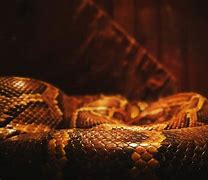
Conservation Status of Sloths and Sloth Bears
IUCN is the International Union for Conservation of Nature. Under their Red List of Threatened Species, sloth bears are listed as vulnerable as of 2016 during their last assessment. Their population is decreasing, with an estimated of fewer than 20,000 individuals spread across the Indian subcontinent.
Some sloth species are in a similar situation; IUCN has the Maned Sloth listed as vulnerable with the population decreasing. Pygmy Sloths are listed as critically endangered, with a population size of around 2,000-2,500 individuals.
The Brown-Throated Sloth is listed as Least Concern, though there is evidence indicating the population is decreasing as well; for this reason, it is urgent to determine the species’ population trends.
Finally, sloth bears! We seized the opportunity to compare sloths and sloth bears to clarify the confusion surrounding their common names and delve into their lifestyles, the threats they face, and ways we can help in their conservation!
pilih jenis kesalahan yang Anda temukan
Pikbest License (Brief Edition)
Pikbest authorizes the User in a non-transferable, non-exclusive manner and on a worldwide basis for the duration of the relevant rights; to download, use and modify the Pikbest Content, as expressly permitted by the applicable license and subject to this document.The Pikbest Authorization differs upon different situations.
While privileges are different upon different user types, there are some restrictions which are applicable to all Pikbest users. →You cannot resell, redistribute, access, share or transfer Pikbest Content.→You cannot use the content in the Pikbest Content in printed or electronic items aimed to be resold.→You cannot use the content in the Pikbest Content (totally or partially) in any trademark, logo or part of the same. You can’tclaim trademark or service mark rights over an Item within the End Product created using that Item.→You can only use an Item for lawful purposes.→You cannot imply that the content is created or claimed to be the copyright of the artwork by you or someone other than the copyright holder of the Pikbest content.→You cannot use “For Reference Only” content in any manner that entails advertising, marketing or commercialization of any product or service.For Full Edition of Pikbest License Agreement, please click here to the Pikbest License page. Any further questions regarding the Pikbest License, please feel free to send an email to [email protected].
Do you want to avoid attribution?
Morphology and anatomy
Sloths can be 60 to 80 cm (24 to 31 in) long and, depending on the species, weigh from 3.6 to 7.7 kg (7.9 to 17.0 lb). Two-toed sloths are slightly larger than three-toed sloths.[22] Sloths have long limbs and rounded heads with tiny ears. Three-toed sloths also have stubby tails about 5 to 6 cm (2.0 to 2.4 in) long.
Sloths are unusual among mammals in not having seven cervical vertebrae. Two-toed sloths have five to seven, while three-toed sloths have eight or nine. The other mammals not having seven are the manatees, with six.[23]
Sloths have colour vision but have poor visual acuity. They also have poor hearing. Thus, they rely on their sense of smell and touch to find food.[24]
Sloths have very low metabolic rates (less than half of that expected for a mammal of their size), and low body temperatures: 30 to 34 °C (86 to 93 °F) when active, and still lower when resting. Sloths are heterothermic, meaning their body temperature may vary according to the environment, normally ranging from 25 to 35 °C (77 to 95 °F), but able to drop to as low as 20 °C (68 °F), inducing torpor.[24]
The outer hairs of sloth fur grow in a direction opposite from that of other mammals. In most mammals, hairs grow toward the extremities, but because sloths spend so much time with their limbs above their bodies, their hairs grow away from the extremities to provide protection from the elements while they hang upside down. In most conditions, the fur hosts symbiotic algae, which provide camouflage[25] from predatory jaguars, ocelots,[26] and harpy eagles.[27] Because of the algae, sloth fur is a small ecosystem of its own, hosting many species of commensal and parasitic arthropods.[28] There are a large number of arthropods associated with sloths. These include biting and blood-sucking flies such as mosquitoes and sandflies, triatomine bugs, lice, ticks and mites. Sloths have a highly specific community of commensal beetles, mites and moths.[29] The species of sloths recorded to host arthropods include[29] the pale-throated three-toed sloth, the brown-throated three-toed sloth, and Linnaeus's two-toed sloth. Sloths benefit from their relationship with moths because the moths are responsible for fertilizing algae on the sloth, which provides them with nutrients.[30]
Their limbs are adapted for hanging and grasping, not for supporting their weight. Muscle mass makes up only 25 to 30 percent of their total body weight. Most other mammals have a muscle mass that makes up 40 to 45 percent of their total body weight.[31] Their specialised hands and feet have long, curved claws to allow them to hang upside down from branches without effort,[32] and are used to drag themselves along the ground, since they cannot walk. On three-toed sloths, the arms are 50 percent longer than the legs.[24]
Sloths move only when necessary and even then, very slowly. They usually move at an average speed of 4 m (13 ft) per minute but can move at a marginally higher speed of 4.5 m (15 ft) per minute if they are in immediate danger from a predator. While they sometimes sit on top of branches, they usually eat, sleep, and even give birth hanging from branches. They sometimes remain hanging from branches even after death. On the ground, the maximum speed of sloths is 3 m (9.8 ft) per minute. Two-toed sloths are generally better able than three-toed sloths to disperse between clumps of trees on the ground.[33]
Sloths are surprisingly strong swimmers and can reach speeds of 13.5 m (44 ft) per minute.[34] They use their long arms to paddle through the water and can cross rivers and swim between islands.[35] Sloths can reduce their already slow metabolism even further and slow their heart rate to less than a third of normal, allowing them to hold their breath underwater for up to 40 minutes.[36]
Wild brown-throated three-toed sloths sleep on average 9.6 hours a day.[37] Two-toed sloths are nocturnal.[38] Three-toed sloths are mostly nocturnal but can be active in the day. They spend 90 per cent of their time motionless.[24]
Sloths are solitary animals that rarely interact with one another except during breeding season,[39] though female sloths do sometimes congregate, more so than do males.[40]
Sloths descend about once every eight days to defecate on the ground. The reason and mechanism behind this behavior have long been debated among scientists. There are at least five hypotheses: 1) fertilize trees when feces are deposited at the base of the tree;[41] 2) cover feces and avoid predation;[42][43][44] 3) chemical communication between individuals;[45] 4) pick up trace nutrients in their claws, that are then ingested;[46] and 5) favor a mutualistic relationship with populations of fur moths.[44][46] More recently, a new hypothesis has emerged, which presents evidence against the previous ones and proposes that all current sloths are descendants from species that defecated on the ground, and there simply has not been enough selective pressure to abandon this behavior, since cases of predation during defecation are actually very rare.[47]
Baby sloths learn what to eat by licking the lips of their mother.[48] All sloths eat the leaves of Cecropia.
Two-toed sloths are omnivorous, with a diverse diet of insects, carrion, fruits, leaves and small lizards, ranging over up to 140 hectares (350 acres). Three-toed sloths, on the other hand, are almost entirely herbivorous (plant eaters), with a limited diet of leaves from only a few trees,[39] and no other mammal digests its food as slowly.
They have made adaptations to arboreal browsing. Leaves, their main food source, provide very little energy or nutrients, and do not digest easily, so sloths have large, slow-acting, multi-chambered stomachs in which symbiotic bacteria break down the tough leaves.[39] As much as two-thirds of a well-fed sloth's body weight consists of the contents of its stomach, and the digestive process can take a month or more to complete.
Three-toed sloths go to the ground to urinate and defecate about once a week, digging a hole and covering it afterwards. They go to the same spot each time and are vulnerable to predation while doing so. Considering the large energy expenditure and dangers involved in the journey to the ground, this behaviour has been described as a mystery.[49][50][51] Recent research shows that moths, which live in the sloth's fur, lay eggs in the sloth's feces. When they hatch, the larvae feed on the feces, and when mature fly up onto the sloth above. These moths may have a symbiotic relationship with sloths, as they live in the fur and promote growth of algae, which the sloths eat.[5] Individual sloths tend to spend the bulk of their time feeding on a single "modal" tree; by burying their excreta near the trunk of that tree, they may also help nourish it.
The pale- and brown-throated three-toed sloths mate seasonally, while the maned three-toed sloth breeds at any time of the year. The reproduction of pygmy three-toed sloths is currently unknown. Litters are of one newborn only, after six months' gestation for three-toed, and 12 months for two-toed. Newborns stay with their mother for about five months. In some cases, young sloths die from a fall indirectly because the mothers prove unwilling to leave the safety of the trees to retrieve the young.[53] Females normally bear one baby every year, but sometimes sloths' low level of movement actually keeps females from finding males for longer than one year.[54] Sloths are not particularly sexually dimorphic and several zoos have received sloths of the wrong sex.[55][56]
The average lifespan of two-toed sloths in the wild is currently unknown due to a lack of full-lifespan studies in a natural environment.[57] Median life expectancy in human care is about 16 years, with one individual at the Smithsonian Institution's National Zoo reaching an age of 49 years before her death.[58]
Although habitat is limited to the tropical rainforests of Central and South America, in that environment sloths are successful. On Barro Colorado Island in Panama, sloths have been estimated to constitute 70% of the biomass of arboreal mammals.[59] Four of the six living species are currently rated "least concern"; the maned three-toed sloth (Bradypus torquatus), which inhabits Brazil's dwindling Atlantic Forest, is classified as "vulnerable",[60] while the island-dwelling pygmy three-toed sloth (B. pygmaeus) is critically endangered. Sloths' lower metabolism confines them to the tropics, and they adopt thermoregulation behaviors of cold-blooded animals such as sunning themselves.[61]
The majority of recorded sloth deaths in Costa Rica are due to contact with electrical lines and poachers. Their claws also provide another, unexpected deterrent to human hunters; when hanging upside-down in a tree, they are held in place by the claws themselves and often do not fall down even if shot from below.
Sloths are victims of animal trafficking where they are sold as pets. However, they generally make very poor pets, as they have such a specialized ecology.[62]
The Sloth Institute Costa Rica is known for caring, rehabilitating and releasing sloths back into the wild.[63] Also in Costa Rica, the Aviarios Sloth Sanctuary cares for sloths. It has rehabilitated and returned about 130 individuals to the wild.[64] However, a report in May 2016 featured two former veterinarians from the facility who were critical of the sanctuary's efforts, accusing it of mistreating the animals.[65]
Di kategori ini, Anda akan menemukan gambar Bola Voli dan gif animasi bergerak Bola Voli yang menarik! Anda dapat mengunduh atau membuat tautan langsung untuk clip art Bola Voli dan animasi Bola Voli di halaman ini secara gratis - saat Anda mengeklik sebuah gambar atau kartun, Anda dapat melihat perincian yang sesuai.
Yang paling menarik, Anda dapat mengirim semua gambar Bola Voli tersebut sebagai kartu ucapan untuk keluarga dan teman-teman Anda secara gratis dan bahkan menambahkan kata-kata sendiri pada eCard pribadi Anda tersebut.
Seluruh gif gambar animasi Bola Voli dan animasi bergerak Bola Voli dalam kategori ini 100% gratis dan tanpa dikenakan biaya untuk menggunakannya. Sebagai timbal baliknya, kami hanya meminta Anda untuk merekomendasikan layanan kami ini di halaman depan atau beranda situs atau blog Anda. Anda dapat mengetahui lebih banyak tentang hal ini di bagian bantuan.
Original file (3,264 × 4,928 pixels, file size: 10.21 MB, MIME type: image/jpeg)
How Slothy are Sloth Bears?
Sloth bears adapt their sleep cycle to their environment, which may be a nocturnal, diurnal, or crepuscular schedule depending on other bears, people, or predators in their habitat. Sloth bears may forage for food at night and sleep during the day to avoid potential conflicts with humans. They typically sleep 10 to 14 hours a day and do not hibernate.
Sloths, contrary to popular belief, do not sleep more than the average 10 to 12 hours, and from our last published research, we know that their activity varies depending on the individual and even differs across the same population; some sloths are more diurnal, others nocturnal.
What is a sloth bear?
A Sloth bear is a type of bear species native to India, Sri Lanka, Nepal, and Bhutan. Known for its long snout and long lower lip used for sucking up insects, it’s officially named Melursus ursinus. Despite the name referring to them as ‘lazy’, sloth bears are anything but lazy!
These bears have a distinctive shaggy black coat with a whitish-yellow ‘U’ or ‘Y’ shaped mark on their chest. And although they share a resemblance, sloth bears should not be confused with the Asian Black Bear (Ursus thibetanus)
What can we do to protect both species?
These extraordinary creatures’ continued existence hinges significantly on our actions today. This involves adopting more sustainable farming practices and endorsing conservation initiatives that safeguard the natural habitats of these animals from further degradation.
You can support organizations working with this species, like Wildlife SOS, founded in 1995; it has a strong track record in India for rescuing wildlife in distress, including sloth bears, elephants, leopards, and others. Free the Bears is an organization that works to rescue and rehabilitate bears in various Asian countries.
Four species of ground sloths inhabited the United States at the end of the last Ice Age. These were Jefferson's ground sloth (Megalonyx jeffersonii), Laurillard's ground sloth (Eremotherium laurillardi), the Shasta ground sloth (Nothrotheriops shastensis), and Harlan's ground sloth (Glossotherium harlani). Of these four only two, Jefferson's and Harlan's ground sloths, are found in the midwestern U.S.
Ground sloths were large relatives of the modern two-toed sloths (Choloepus spp.) and three-toed sloths (Bradypus spp.). Unlike modern sloths, which spend most of their time in trees, the ground sloths spent all of their time on the ground. This is fortunate because Jefferson's and Harlan's ground sloth were each about the size of an oxen.
All four species of ground sloth had very large claws. However, all were herbivores. They had relatively small, blunt teeth, which they probably used for browsing on trees and shrubs. The shape of their hip bones indicates that they could stand up on their hind legs. This would allow them to reach high up into trees for the best leaves and twigs.
The picture above shows a reconstruction of Jefferson's ground sloth from the University of Iowa Museum of Natural History.
Are sloth bears related to sloths?
Contrary to their name, sloth bears and sloths are not closely related, and both belong to entirely different taxonomic orders and families with unique evolutionary histories. For example, sloth bears belong to the order Carnivora, which includes mammals such as dogs, cats, seals, and bears. Within this order, they are also under Ursidae or Bear family.
The name “sloth bear” comes from the bear’s slow-moving behavior and long claws, like a sloth, which led early zoologists and taxonomists to draw parallels between them. However, this similarity is due to convergent evolution, where unrelated species independently develop similar traits in response to similar environments.
Despite these surface resemblances, sloth bears and sloths are genetically and taxonomically distant as well as having strikingly different evolutionary paths.
Sloths, unlike sloth bears, belong to the order Pilosa, sharing it with anteaters and armadillos. Over millions of years, sloths have adapted to a slow-paced arboreal lifestyle, developing features like long arms, curved claws, and a slow metabolism to thrive in treetop habitats where they perform various activities, including eating, sleeping, mating, and giving birth.
Sloth bears….and sloths and bears
Sloth bears got their name in 1791 by English zoologist George Shaw, who encountered the bear and believed the species was related to actual sloths since they shared similar traits, naming them “bear sloths”. Shaw named them Bradypus ursinus, which means something like ‘slow feet bear,’ using the family name of three-fingered sloths, the Genus Bradypus.
The sloth bear goes by many different names throughout the region depending on the language, and once Europeans got involved, the name changed once again. Confusion over whether the bear is a bear or a sloth made it challenging for scientists to classify it under the Latin-based binomial naming system. Once it was indeed determined that it was a bear, they changed the Genus but kept the common name, so “bear sloth” changed to “sloth bear.”
The modern scientific name of the sloth bear, Melursus ursinus, combines Greek and Latin elements. “Melursus” is derived from the Greek “melas” (meaning “black”) and the Latin “ursus” (meaning “bear”), referring to the bear’s dark fur. The specific name “ursinus,” from Latin, translates to “bear-like.”
To add more confusion to the subject, the most common name for sloths in Latin America is ‘oso perezoso’, which means, as you might guess, sloth bear.
What do sloth bears eat?
Despite being in the order Carnivora, sloth bears are myrmecophagous, meaning they consume termites and ants. Occasionally, during monsoon season, they are known to dine on fruit in trees such as mango, fig, ebony, etc., as well as flowers. Termites, ants, beetles, and other insects are also of interest to sloth bears year-round, and they are 95% of their diet.
Aside from digging out mounds, they are capable climbers and can climb trees to knock down honeycombs to collect the honey from the ground.
Scientists study sloth bears around India through GPS collars that communicate through satellites and allow them to collect data from the exact location of the animals at any given time. Scientists have studied and collected data on sloth bear attacks, threats to sloth bears, sloth bear denning, relocation of sloth bears, and sloth bear densities. The sloth bear is the least studied and understood bear in the Indian subcontinent.
Here at SloCo, we similarly study sloths through VHF/GPS collars, backpacks, and data loggers. VHF and GPS collars allow scientists to locate sloths and collect information about the sloth and its habitat.
The overall goal of scientists studying sloths is the same for sloth bears: to ensure long-term survival, conservation, and coexistence.























